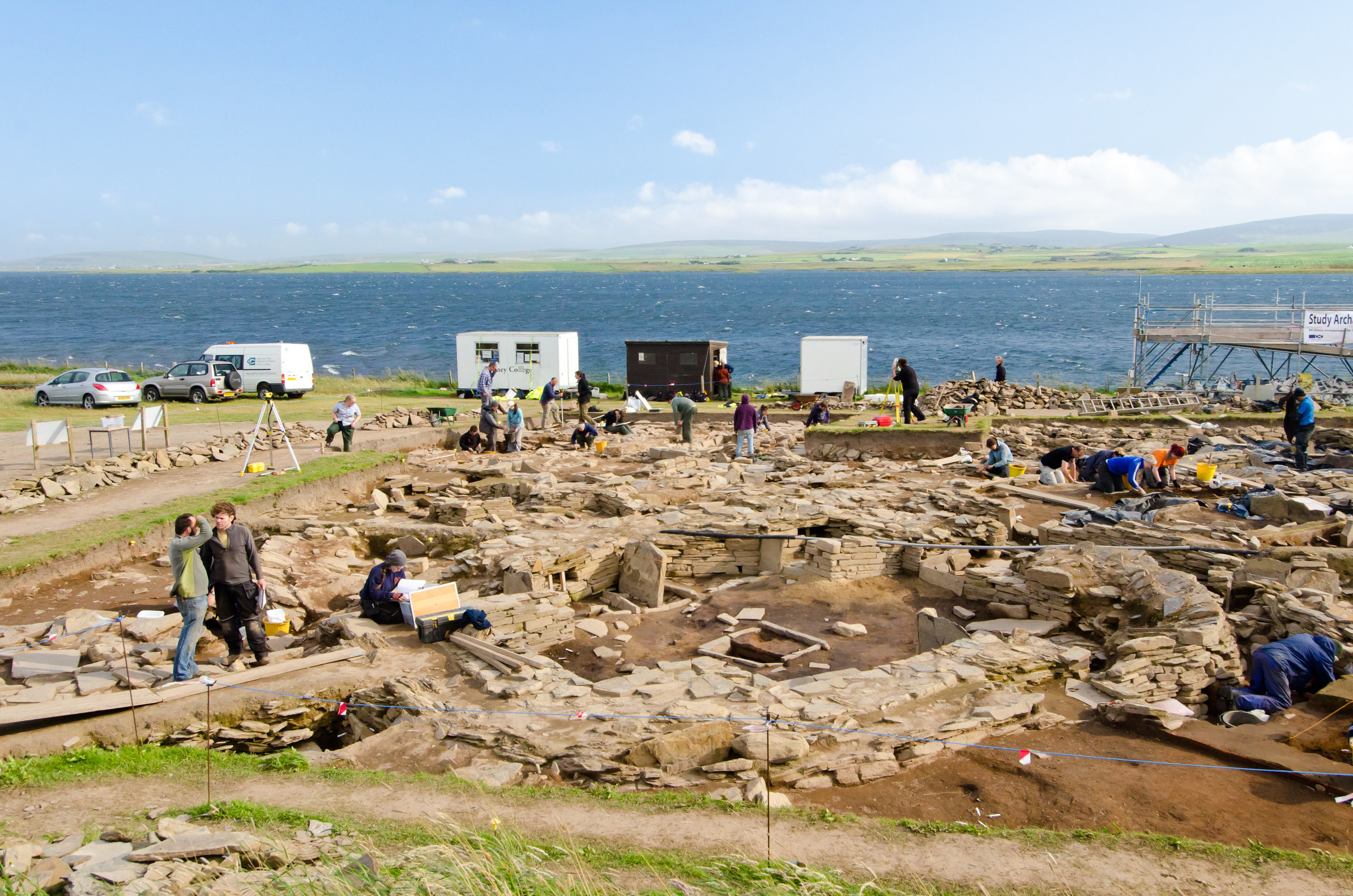A north museum is showcasing neolithic finds from a world famous archeological site.
Orkney Museum is displaying artefacts from the Ness of Brodgar excavations near Loch of Harray on the islands’ Mainland.
The Stone Age dig has provided evidence of housing, decorated stone slabs, a massive stone wall with foundations, and even a large cathedral-like structure which measured 80ft long and 60ft wide, with walls 13ft thick.
A downstairs room at the museum is currently home to some of the other star discoveries at the Ness of Brodgar, including mace heads, polished stone axes and a carved stone ball.
This ball, which is believed to be an early form of art, caused great excitement when it was uncovered last year and will be going on public display for the first time.
Also on show is a carved stone from Smerquoy, St Ola, believed to be the oldest piece of art to be found in Orkney.
Other finds from Smerquoy will go on display later, as will artefacts from the Cairns, South Ronaldsay.
Tom Muir, archaeologist and exhibitions officer at the museum, said: “In the past the Orkney Museum has displayed artefacts from on-going excavations – straight from the trenches and into a case.
“This display is the continuation of that partnership between archaeologists and the museum, where we give them the opportunity to show what they have found during their excavations.
“As more artefacts become available the other cases will be filled and text and photographs will complete the displays.”
Mr Muir added: “When I started digging back in 1980 there was little interaction between archaeologists and the public. People could be shown around if they turned up, but there were no open days or exhibitions on what was being found.
“Things have changed a lot, and for the better. Now visitors are welcome and special open days give them access to the site.
“Orkney College UHI’s archaeological team, Orkney Research Centre for Archaeology, is working together with the Historic Scotland ranger service to actively promote the joys of digging to a new generation.
“Along with other dedicated teams from outside of the islands, they are bringing our past to life. By making display space available within the Orkney Museum we are able to reach even more people and to make them feel that our islands’ archaeology is for everyone.”
The Orkney Museum is currently open from Monday to Saturday between 10.30am and 5pm and admission is free.
